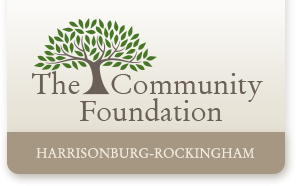Summer reading that’s worth a forward
Summer reading that’s worth a forward
Every week, the team at The Community Foundation works with a wide range of charitably-minded individuals and families who are either already working with The Community Foundation or are considering establishing a donor-advised or other type of fund to organize their giving. We also talk with attorneys, accountants, and financial advisors as they work alongside charitably-minded clients. Indeed, many advisors are telling us that they’re taking advantage of summer’s slower pace to get a jump on 2024 tax planning and estate plan updates.
As you work with your advisors over the next few months, be sure to let them know that The Community Foundation can serve as the hub of your family’s philanthropy by administering a wide range of charitable giving vehicles, including:
–Donor-advised funds, which may be a better fit for families than a private foundation
–Field-of-interest funds and designated funds, which enable you to support specific causes and organizations and, if you are 70 ½ or older, can receive a tax-savvy “Qualified Charitable Distribution” from your IRA
–Bequests and other legacy gifts to help ensure that the causes you’ve supported during your lifetime can continue to benefit from your generosity for years to come
–Unrestricted gifts to support The Community Foundation’s work to grow philanthropy and improve the quality of life in our region across generations, especially as community needs evolve
Along these lines, some of you have requested that we provide a reading list to pass along to your advisors to help them stay up-to-date on legal and tax issues impacting charitable giving. Here are a few suggestions you could forward to your advisors (or simply forward this email):
–For advisors working with clients who support higher education, it’s important to stay on top of the tax treatment of NIL collectives. The team at The Community Foundation is happy to talk with your advisors about what’s going on here and how they can follow best practices.
–It’s becoming more and more popular for philanthropists to explore giving cryptocurrency to charitable causes. Encourage your advisors to reach out to the team at The Community Foundation as they encounter this issue with clients.
–A focus on donor intent is especially important as cautionary tales emerge in case law. The Community Foundation is committed to helping advisors help their clients achieve charitable goals. Our knowledgeable staff and independent board of directors are dedicated to carrying out donors’ philanthropic wishes.
As always, please let us know if you’d like our team to be part of a conversation with your advisors. We welcome the opportunity to serve as the go-to charitable giving resource as you build a comprehensive financial and estate plan that includes philanthropy.
Thank you for the opportunity to work together! Give us a call at 540-432-3863.
This article is provided for informational purposes only. It is not intended as legal, accounting, or financial planning advice.





















